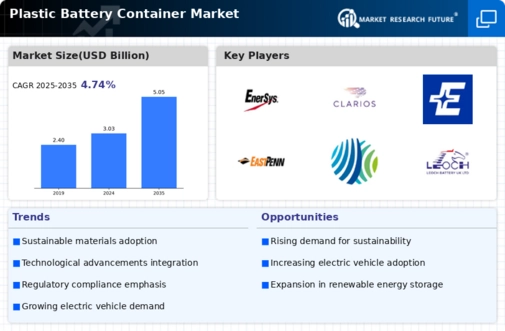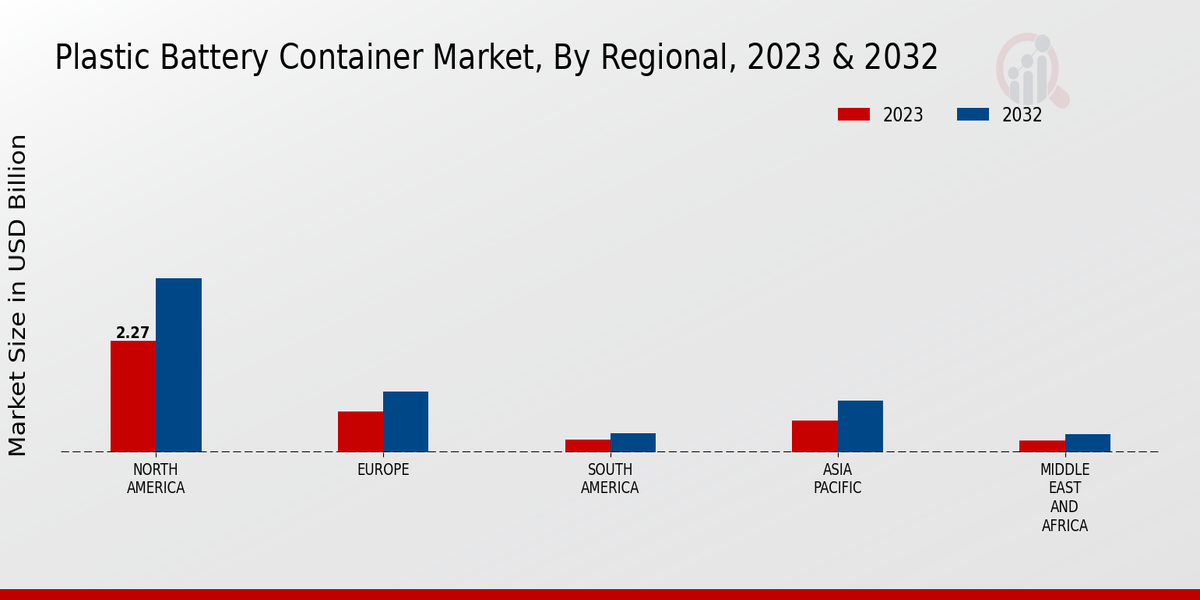Growing Renewable Energy Sector
The expansion of the renewable energy sector is influencing the Global Plastic Battery Container Market Industry. As solar and wind energy systems increasingly incorporate energy storage solutions, the need for reliable battery containers becomes paramount. These containers must be designed to accommodate various battery types used in renewable energy applications. The integration of energy storage systems enhances grid stability and supports the transition to cleaner energy sources. This trend is expected to drive market growth, as stakeholders seek durable and efficient plastic solutions to meet the demands of the evolving energy landscape.
Rising Demand for Electric Vehicles
The increasing adoption of electric vehicles (EVs) is a primary driver for the Global Plastic Battery Container Market Industry. As governments worldwide implement stricter emissions regulations and promote sustainable transportation, the demand for efficient battery systems rises. This trend is expected to contribute significantly to the market, with projections indicating a market size of 3.03 USD Billion in 2024. The need for lightweight, durable, and cost-effective battery containers aligns with the evolving requirements of EV manufacturers, thereby fostering innovation and growth within the industry.
Increased Investment in Research and Development
The Global Plastic Battery Container Market Industry is witnessing increased investment in research and development. Companies are allocating resources to explore new materials and designs that enhance battery performance and safety. This focus on innovation is crucial for meeting the evolving needs of consumers and industries alike. As R&D efforts yield new solutions, the market is expected to benefit from enhanced product offerings that cater to diverse applications. This trend underscores the importance of continuous improvement and adaptation in a rapidly changing technological landscape.
Technological Advancements in Battery Technology
Technological advancements in battery technology are propelling the Global Plastic Battery Container Market Industry forward. Innovations such as lithium-ion and solid-state batteries necessitate specialized containers that can withstand varying temperatures and pressures. As manufacturers strive for higher energy densities and longer lifespans, the demand for advanced plastic battery containers is likely to increase. This shift is indicative of a broader trend towards improved battery performance and safety, which could lead to a market valuation of 5.05 USD Billion by 2035, reflecting a compound annual growth rate of 4.75% from 2025 to 2035.
Environmental Regulations and Sustainability Initiatives
Stringent environmental regulations and sustainability initiatives are shaping the Global Plastic Battery Container Market Industry. Governments are increasingly mandating the use of recyclable and eco-friendly materials in battery production. This regulatory landscape encourages manufacturers to innovate and adopt sustainable practices, thereby enhancing the appeal of plastic battery containers. As companies strive to reduce their carbon footprints, the market for environmentally responsible battery solutions is likely to expand. This shift not only aligns with global sustainability goals but also positions the industry for long-term growth and resilience in a competitive marketplace.






















Leave a Comment